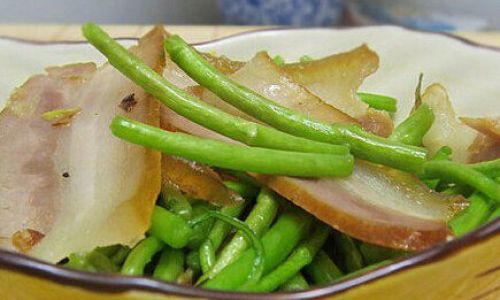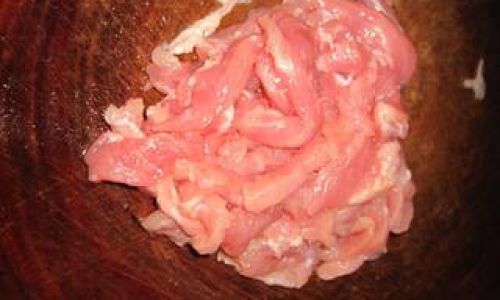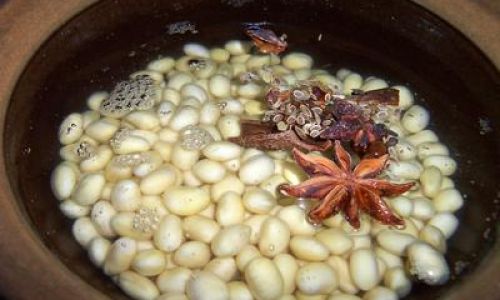Introduction

The art of making freshly caught brine, or “xian lao lu shui” in Chinese, is a culinary tradition deeply rooted in the streets and markets of China. This unique flavorful liquid is used to cook and marinate a variety of seafood, meats, and vegetables, giving them a rich, savory taste that is both comforting and exhilarating. Unlike pre-made or store-bought brines, freshly caught brine is made with the freshest ingredients, often including seafood that has been recently caught, hence its name.
In this comprehensive guide, we will walk you through the entire process of making freshly caught brine from scratch. We’ll cover everything from selecting the right ingredients to cooking and storing your brine, ensuring you end up with a delicious, aromatic liquid that can be used to elevate your dishes to new heights.
Section 1: Understanding the Basics of Brine Making
Before diving into the specifics of making freshly caught brine, it’s essential to understand the basics of brine making. Brine is essentially a saltwater solution, but in the context of Chinese cuisine, it often includes a blend of spices, herbs, and sometimes sweeteners to create a complex flavor profile.
1 Ingredients Overview
The key to making a great brine lies in the quality and combination of ingredients. Here are some of the essential components you’ll need:

- Salt: Provides the basic seasoning and helps to preserve the food.
- Sugar or Honey: Adds sweetness to balance out the saltiness.
- Spices and Herbs: Such as star anise, cloves, cinnamon, ginger, and garlic. These add depth and complexity to the brine.
- Liquid Ingredients: Water, soy sauce, rice vinegar, or other flavorful liquids.
- Freshly Caught Ingredients: Seafood like shrimp, crab, or fish bones, which provide the unique “freshly caught” flavor.
2 Equipment Needed
- A large pot or stockpot for boiling the brine.
- A strainer or sieve for removing solid ingredients.
- A large container for storing the brine.
- Measuring cups and spoons for accuracy.
- A chef’s knife and cutting board for preparing fresh ingredients.
Section 2: Selecting and Preparing Ingredients
1 Choosing Fresh Seafood
The cornerstone of freshly caught brine is, of course, the seafood. Look for fish or shellfish that is fresh, firm, and has a pleasant aroma. Avoid any seafood that smells fishy or has a slimy texture.
- Fish Bones and Heads: These can be used to create a rich, fishy broth.
- Shrimp Shells and Heads: Provide a delicious, slightly sweet flavor.
- Whole Crabs or Crab Shells: Add a unique, slightly salty taste.
2 Preparing the Seafood
- Rinse the seafood thoroughly under cold running water.
- If using whole fish, remove the scales, fins, and guts. Cut the fish into large pieces, including the bones and head, for maximum flavor extraction.
- For shrimp, peel and devein them, but reserve the shells and heads.
- Crab shells can be used whole or broken into smaller pieces for easier handling.
3 Preparing Other Ingredients

- Peel and slice fresh ginger and garlic.
- Toast spices like star anise and cloves lightly in a dry pan to release their aromas.
- Measure out all liquid ingredients accurately.
Section 3: Making the Brine
1 Creating the Base
- Boiling the Seafood: Start by placing the fish bones, shrimp shells, crab shells, and any other seafood bones or shells in the large pot. Cover with cold water and bring to a boil over high heat.
- Skimming the Foam: As the water boils, skim off any foam or impurities that rise to the surface. This helps to clarify the broth.
- Simmering: Reduce the heat to low and let the broth simmer gently for about 30-45 minutes, allowing the flavors to meld together.
2 Adding Seasonings
- Salt and Sugar: Once the broth has simmered for a while, add salt and sugar (or honey) to taste. Start with a small amount and adjust as needed.
- Spices and Herbs: Add the toasted spices, fresh ginger, and garlic to the pot. Continue to simmer for another 15-20 minutes, allowing the spices to infuse the broth.
- Liquid Ingredients: Stir in soy sauce, rice vinegar, or any other flavorful liquids you’re using. Taste and adjust the seasoning as needed.
3 Straining the Brine
- Removing Solids: Once the broth is well-flavored, turn off the heat and let it cool slightly. Use a strainer or sieve to remove all the solid ingredients, leaving behind a clear, flavorful brine.
- Discarding Solids: Discard the seafood bones, shells, and spices. They have done their job and can now be composted or thrown away.
Section 4: Using and Storing the Brine
1 Cooking with Freshly Caught Brine

- Marinating: Use the brine to marinate meats, seafood, or vegetables for several hours or overnight. This will infuse them with the delicious flavors of the brine.
- Boiling: You can also use the brine to boil or poach foods, such as eggs, tofu, or vegetables, giving them a rich, savory taste.
- Simmering: For meats or larger pieces of seafood, simmer them in the brine until cooked through.
2 Storing the Brine
- Cooling: Let the brine cool completely to room temperature before storing.
- Refrigeration: Pour the brine into a clean, airtight container and store it in the refrigerator for up to a week.
- Freezing: For longer storage, pour the brine into freezer-safe containers and freeze for up to 3 months. Thaw in the refrigerator before using.
Section 5: Tips and Tricks for Perfect Brine
1 Adjusting Flavors
- Balance: The key to a great brine is balance. Make sure the saltiness, sweetness, and spice levels are harmonious. Taste and adjust as you go.
- Experimenting: Don’t be afraid to experiment with different spices, herbs, and sweeteners to find a flavor combination that suits your taste.
2 Using High-Quality Ingredients
- Freshness Matters: Always use the freshest ingredients possible, especially the seafood. This will make a significant difference in the final flavor of your brine.
- Organic Options: If possible, opt for organic spices and herbs to avoid any unwanted pesticides or additives.
3 Storing and Reusing
- Cleanliness: Ensure all equipment and containers are clean and free of contaminants before using them for storing brine.
- Reusing: You can reuse the brine several times, but be aware that its flavor will gradually weaken. Add fresh spices and seasoning each time you reuse it to maintain its potency.
Conclusion

Making freshly caught brine is a rewarding culinary endeavor that can elevate your dishes to new levels of flavor and complexity. By following the steps outlined in this guide, you’ll be able to create a delicious, aromatic brine that is perfect for marinating, boiling, or simmering a variety of foods. Remember, the key to success is using high-quality ingredients, tasting and adjusting as you go, and storing your brine properly to ensure it stays fresh and flavorful.
With freshly caught brine, you’ll be able to bring a unique, authentic taste of Chinese street food to your kitchen, transforming everyday ingredients into extraordinary dishes. So, why wait? Gather your ingredients, roll up your sleeves, and start making your own freshly caught brine today!






0 comments